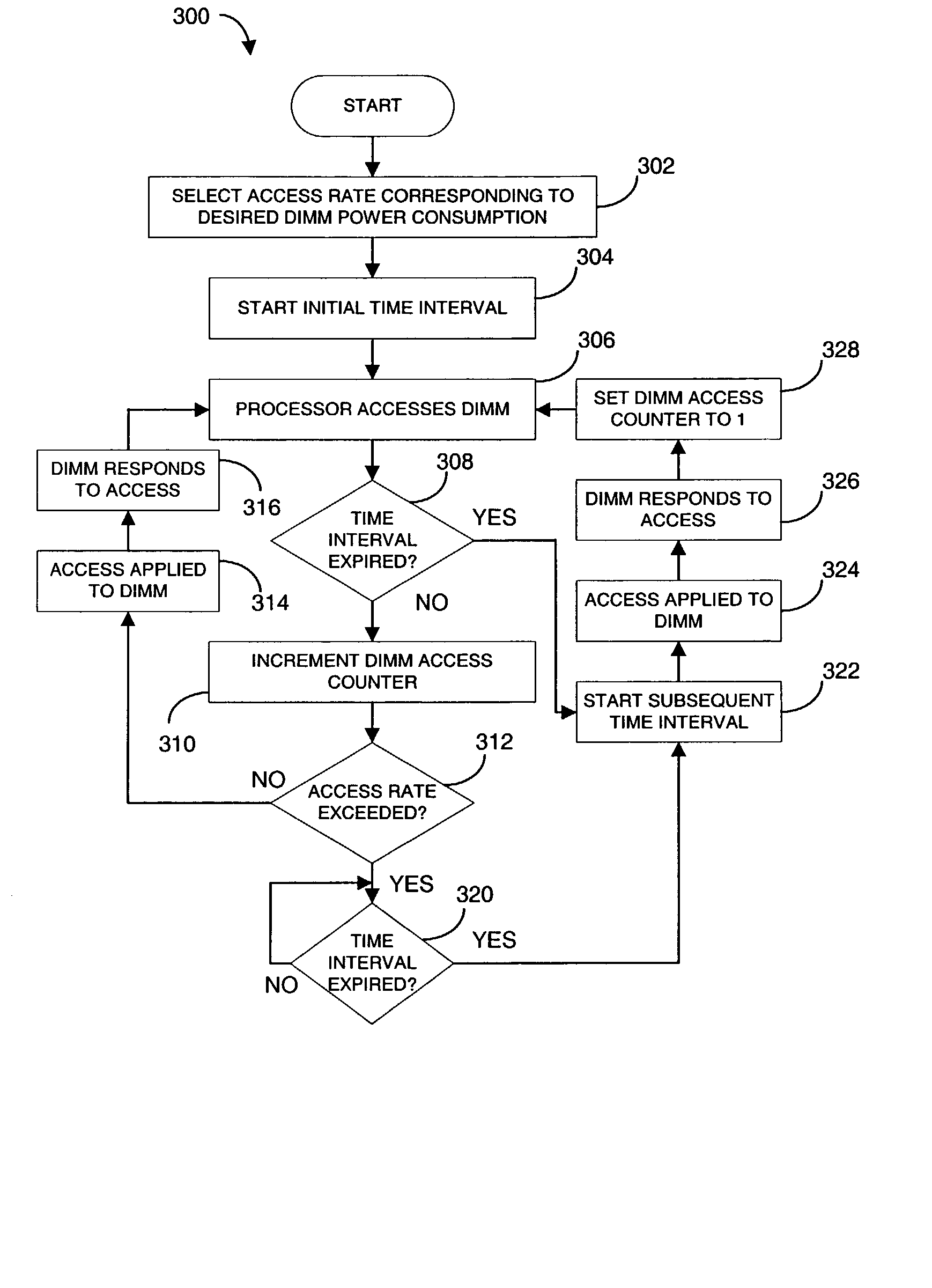Dram power management
a power management and dram technology, applied in the field of computer systems, can solve the problems of large power consumption of computers and computing devices, large power consumption, and large power consumption
- Summary
- Abstract
- Description
- Claims
- Application Information
AI Technical Summary
Problems solved by technology
Method used
Image
Examples
Embodiment Construction
[0035] Several exemplary embodiments for managing DRAM power consumption will now be described. It will be apparent to those skilled in the art that the present invention may be practiced without some or all of the specific details set forth herein.
[0036] As discussed above, in a typical application, the DIMM at typical access rates results in an average of about 6 to 9 watts of power consumption by the DIMM. The same DIMM can have a maximum power consumption at a maximum access rate of as much as 14 watts. In one embodiment, the system and method for reducing the power consumption of the DIMM is a method of limiting the number of accesses to the DIMM for a given time interval so that a maximum power consumption for DIMM does not exceed a pre-selected amount.
[0037] In one embodiment, the access rate can be limited to a selected rate such that the power consumption cannot exceed a corresponding power level for a pre-selected time interval. By way of example, the corresponding power c...
PUM
 Login to View More
Login to View More Abstract
Description
Claims
Application Information
 Login to View More
Login to View More - R&D
- Intellectual Property
- Life Sciences
- Materials
- Tech Scout
- Unparalleled Data Quality
- Higher Quality Content
- 60% Fewer Hallucinations
Browse by: Latest US Patents, China's latest patents, Technical Efficacy Thesaurus, Application Domain, Technology Topic, Popular Technical Reports.
© 2025 PatSnap. All rights reserved.Legal|Privacy policy|Modern Slavery Act Transparency Statement|Sitemap|About US| Contact US: help@patsnap.com



